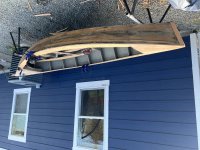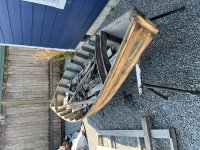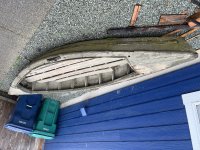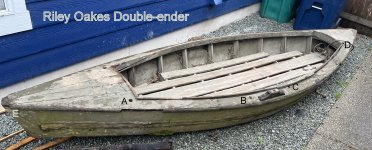Good morning, Riley~
Sweet little vessel! I would agree that the end with the longer deck is likely the bow.
Of course I am curious as to what you know about her. Any history? Where was she found? LOA and beam? (Pretty sure we all know her draft is "not much".....) I think I can see - and deduce from the ample framing - that her bottom is planked lengthwise - correct? Any sign of a skeg having been on the bottom at one time?
View attachment 58843
I am most curious about the holes in the deck - A - D on the port side. Any ideas? I am wondering if they once held pipes or poles to support a canvas "blind". Such could once have been used for night lighting. Any chance the whitish color on the decks is white lead - the paste (thick paint) that would have been put down beneath canvas decks? Any sign of tack holes around the edges or beneath the quarter-round gunwale guards? (Or is it simply the pale grey paint used on the interior and floorboards?)
It looks like there were eyes (E) at both ends?
Also, was there a spray rail all along the side?
Best of luck on your restoration. I look forward to see her afloat!
SJS









